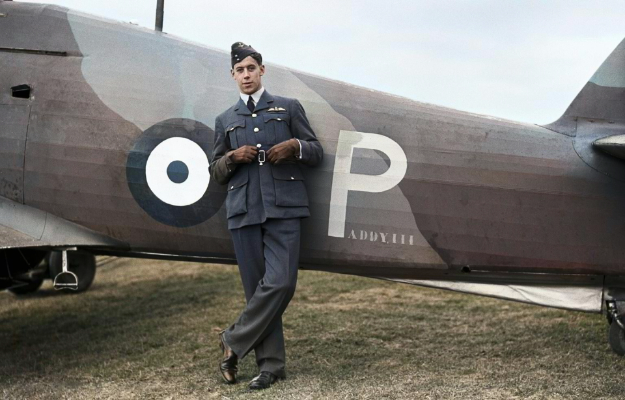It might seem strange, but the Royal Air Force’s (RAF) first Flying Ace of the Second World War wasn’t from Britain – he was from New Zealand. Edgar “Cobber” Kain earned quite a reputation for himself in the short time he fought overseas during the Battle of France, before meeting a tragic and wasteful end.
Discover Kain’s story and the heroism that earned him the Distinguished Flying Cross.
Edgar ‘Cobber’ Kain’s early life
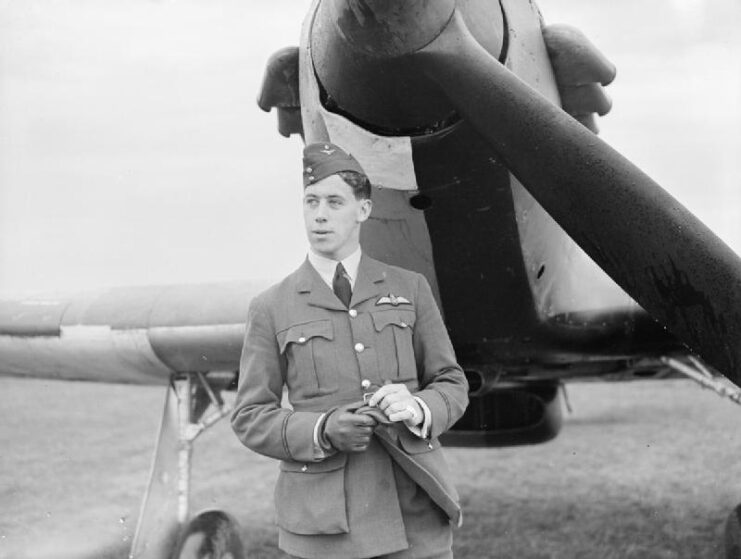
Edgar James Kain was born in New Zealand on June 27, 1918. As a boy, he was interested in athletics and seldom in academics. When he was a little older, he attended Christ’s College in Christchurch, near the Wigram Aerodrome. From there, he could see Royal New Zealand Air Force (RNZAF) pilots as they went out on training missions, which sparked his interest in flying.
When he dropped out of school, Kain worked toward earning his pilot’s license, with a dream of going into the RAF. He began his training in a de Havilland Tiger Moth, and it wasn’t long before he earned his license.
In November 1936, Kain traveled to England to apply to the Air Ministry for a short-service commission. Unfortunately, his blood pressure had skyrocketed during the trip over and he failed his medical examination.
No. 73 Squadron RAF
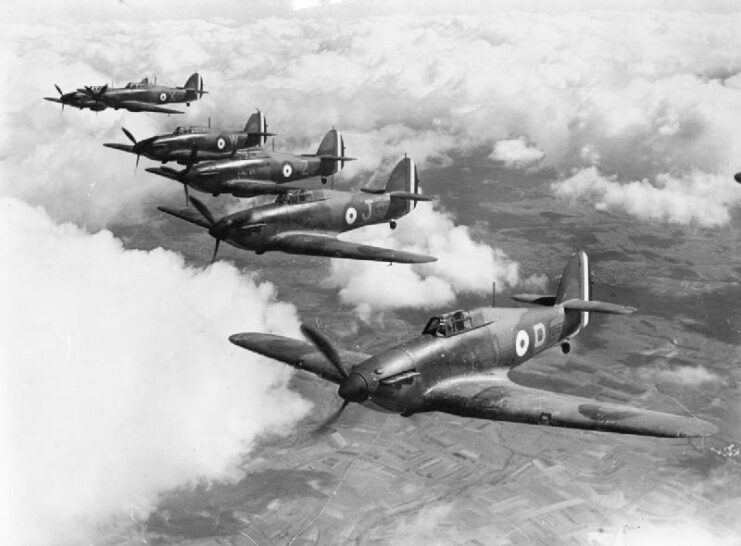
Edgar Kain was able to try again. This time, he passed and was sent for a 10-week training course. Just prior to completing the necessary work, he was asked whether he wanted to be trained further in fighters or bombers – he chose the former.
Kain was accepted for a short-service commission as an acting pilot officer in March 1937. From there, he went on to complete further training, earning his wings on June 25 of that year. By this point, he was already an extremely proficient flyer who was able to complete complex acrobatic maneuvers, although he was often told off for performing them too close to the ground.
In November 1937, Kain was assigned to No. 73 Squadron RAF, first flying the Gloster Gladiator, before converting to the Hawker Hurricane Mark I. With the No. 73, he earned himself the nickname “Cobber” – New Zealand slang for “friend.”
A slow entry into combat
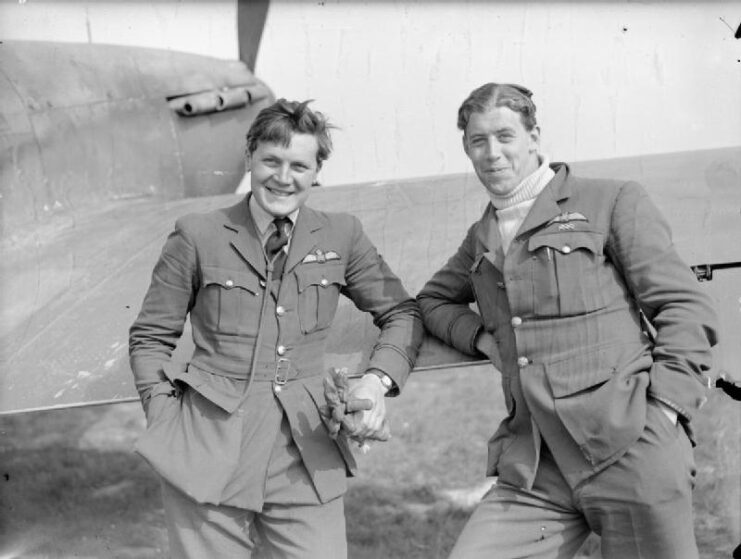
Although he had a number of small accidents, Edgar Kain was promoted to flying officer in July 1939. When the Second World War began a month later, No. 73 Squadron RAF was immediately mobilized.
On September 8, 1939, the pilots were deployed to Le Havre – Octeville Aerodrome in France, where they acted as air support for the British Expeditionary Force (BEF). Although they were within reach of the enemy, they had very little contact with the Germans during this period, which became known as the Phoney War.
On November 8, 1939, Kain scored the first aerial victory for his squadron and the Dominion pilots. While flying his Hawker Hurricane, he spotted a Dornier Do 17. He pursued the German light bomber and shot it down over the village of Lubey. He engaged in other small air skirmishes, but it wasn’t until March 1940 that Kain earned himself another accolade.
Edgar ‘Cobber’ Kain finds fame in the skies over France
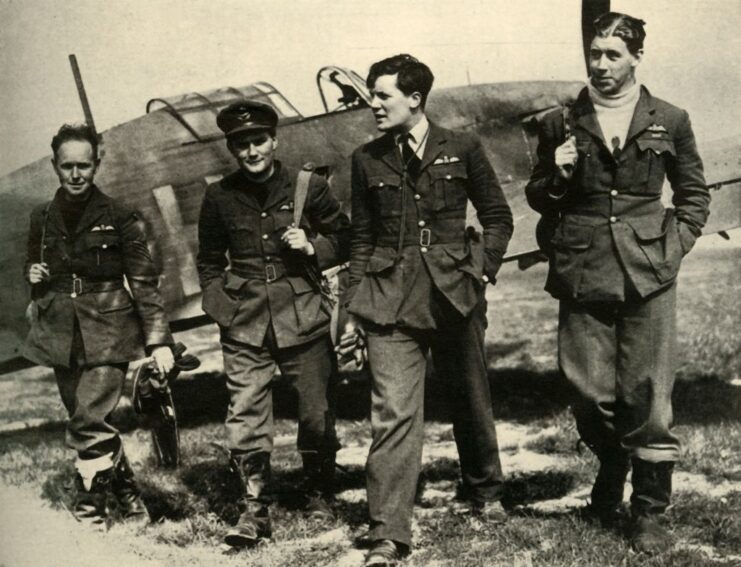
Edgar Kain engaged two Messerschmitt Bf 109s, taking out one. He was told he’d be awarded the Distinguished Flying Cross for this, as it marked his fifth kill, earning him the status of Flying Ace. With this announcement, Kain became a well-known figure throughout the Allied nations. One reporter went so far as to say he was “carrying the Dominion banner across the German frontiers in grand style.”
While his fame grew, Kain continued flying missions throughout France. He also became engaged to Joyce Phillips, with plans to marry later that year. This had to wait, however, as the Germans launched their blitzkrieg on France, and No. 73 Squadron RAF was placed right in the middle of it.
It didn’t take long for Kain to increase his kill count. He shot down three enemy aircraft between May 10-12, 1940, with another two on May 19.
Battle of France
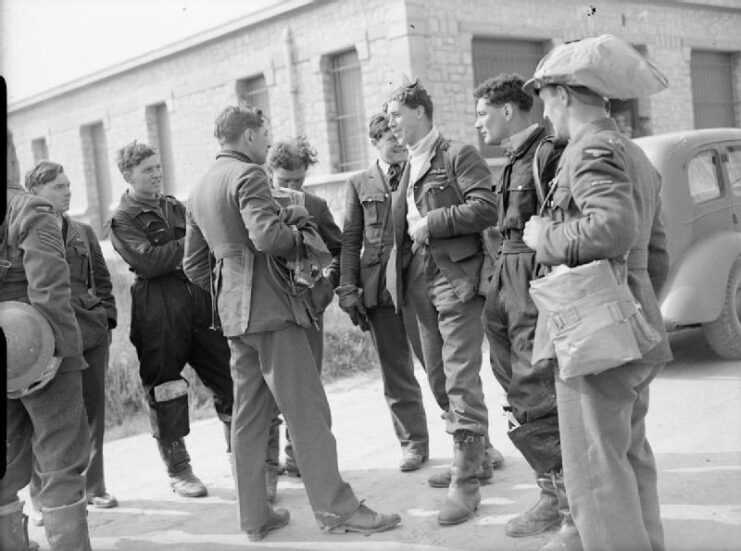
However, seeing constant action while a heavy barrage of enemy aircraft try to shoot you down takes its toll. Edgar Kain was stood down on May 22 and sent back to England, as his commanding officer could see he was growing increasingly agitated, jumpy and paranoid.
This break from the fighting didn’t last long, as the Battle of France was too crucial and Kain was one of the few remaining pilots of No. 73 Squadron RAF who could still fly. He was put back in the air on May 25, only a short time later.
According to most records, by the beginning of June 1940 Kain had shot down 17 German aircraft. As he’d flown consistently with little rest, he was given an order on June 6 to return to England as soon as replacements arrived. They did so the next day and Kain, exhausted from the heavy fighting, prepared to leave. The men of No. 73 lined up at Échemines airfield to see him off.
Edgar ‘Cobber’ Kain’s final flight
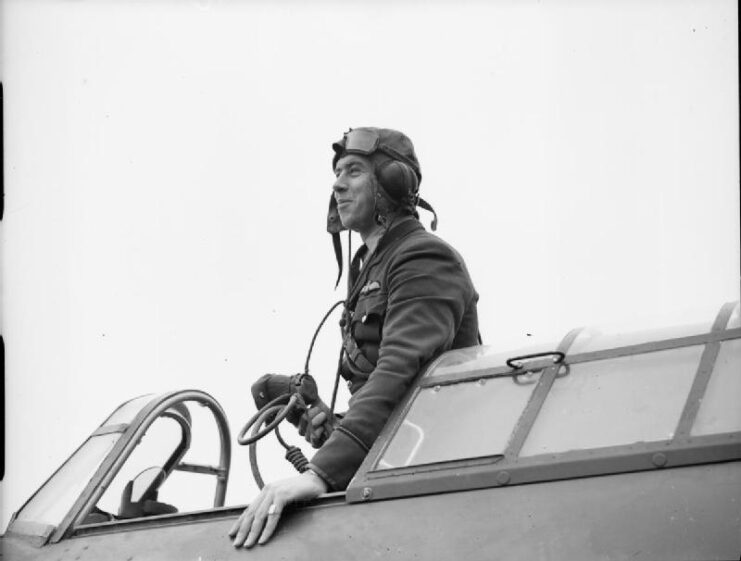
Once in the air in his Hawker Hurricane, Edgar Kain decided to perform a series of rolls to show off his skills. However, he flew too close to the ground on his third set. Hitting it, he was thrown out of the aircraft and killed on impact at only 21 years old. He was buried in Troyes a day later. His body was eventually moved to the Commonwealth War Graves Commission’s Choloy War Cemetery, where his headstone reads, “‘Cobber Kain’ You Inspired Our Little Nation. New Zealand Remembers. Adieu.”
More from us: Operation Copperhead Was Almost Compromised By A Drunk Bernard Montgomery Lookalike
Kain’s plan had been to marry Joyce Phillips while in England. As such, his mother and sister were traveling from New Zealand when they got word of his death. They were asked to attend a private ceremony at Buckingham Palace in September 1940, where they were presented with his Distinguished Flying Cross by King George VI.
As a highly publicized figure, word of his death spread quickly around the Commonwealth.
